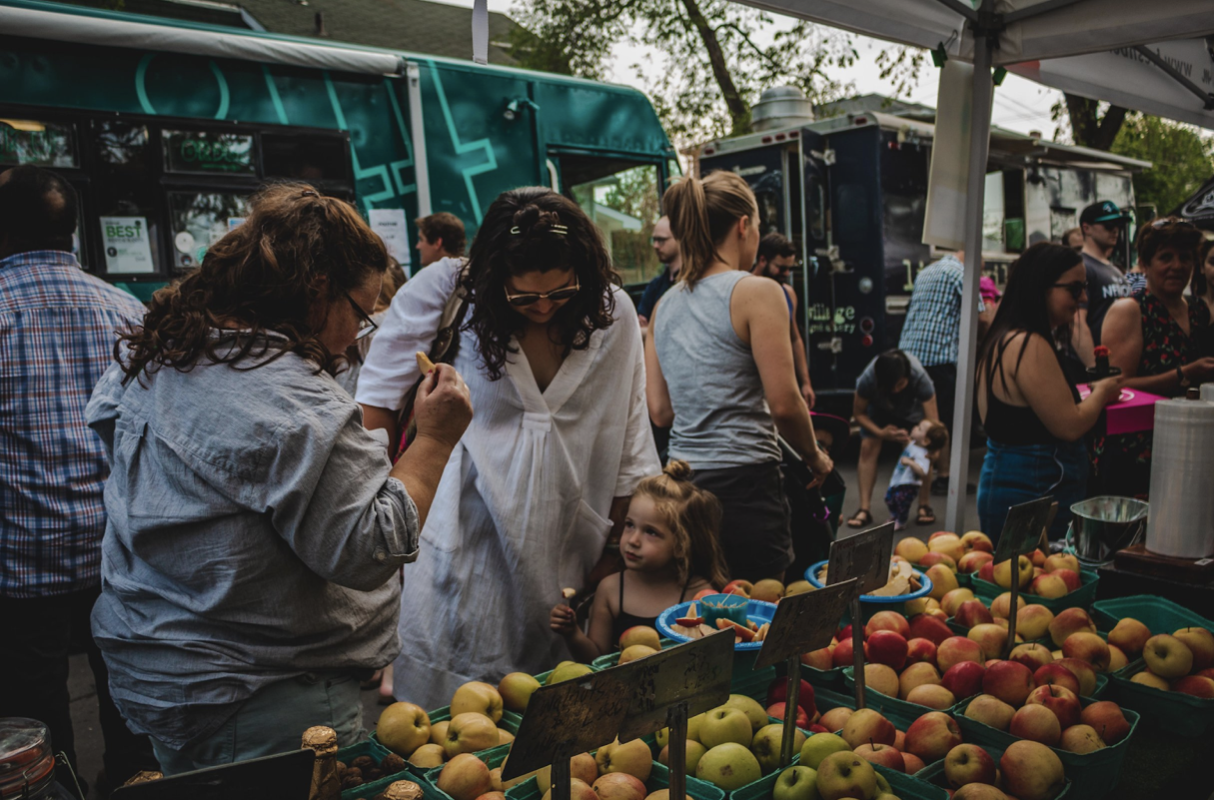Lessons from Mexico: How Street Vendors Make More Child-friendly Cities
/As a bit of a foodie, one of the things I looked forward to the most while travelling is the street food. Food is a fundamental component of culture and I have always found there to be something gratifying in witnessing locals combine fresh ingredients into an incredible meal right before your eyes. In fact, some of my most memorable travelling experiences culminate around street food. Whether it was the amazing bowl of noodles prepared in a bustling market in Shenzhen or fresh fish in the heart of Bergen’s fjords…my connections to these cities were forged by food. However, while travelling through Mexico recently, I realized that perhaps it wasn’t the cuisine alone that made these experiences so noteworthy.
On my first night, I set out in search of freshly made tamales. Luckily, the open-air market that popped up only once a week, referred to as a tianguis in Mexico and Central America, was in full swing. I was overwhelmed by the options, with what seemed like hundreds of local vendors sprawling from a central plaza into nearby cobblestone streets. The aromas of grilled chillies, spiced meats, and sweet fruits wafted by we explored street after street. At nearly every turn, we found families huddled around comals, a griddle used to cook tortillas, amongst various other foods. After opting for tacos al pastor, we settled for a seat on the curb to enjoy our meal. While perched on the edge of the street, I studied the market. While colorful, filled with music, and even at one point fireworks, I came to the realization of what truly filled the market with a sense of vibrancy: the local children.
Image 1: https://theculturetrip.com/north-america/mexico/articles/a-tour-of-oaxacas-best-markets/
While family members of all ages may have gathered to share a meal, it was clear that it was the children who took the true claim of the streets. Between bites, they ran from vendor to vendor, conducted impromptu soccer matches, played games, and filled the air with laughter. At first, I was astonished at how even the youngest of these children, some no more than 3 or 4 years old, moved freely and independently throughout the crowded market. As I studied the market further, it was clear that there were a number of intricacies in effect that made the tianguis a space in which children felt safe, secure, and free to embrace and enjoy play.
First, there was no shortage of surveillance. With food being prepared and sold directly on the street, there were always watchful eyes over the children. Second, it was evident that there was a strong sense of community and thus trust, between street vendors as they mingled amongst one another, sharing food, supplies, and conversation. Finally, and perhaps most importantly, there were no vehicles in sight. The streets of the tianguis were truly spaces for people.
So, what can the tianguis teach us about creating child-friendly spaces in Canada?
In many Canadian cities, streets are not often considered child-friendly spaces. This is particularly true in neighbourhoods with a curvilinear pattern of development, where wide lanes, high-speed limits, and sometimes even a lack of sidewalks all indicate that streets are places for vehicles rather than children. When children do take to the streets, the presence of an automobile creates not only potential threats to safety but an impediment to play. Any child who grows up playing street hockey in their neighbourhood knows this to be true. In addition to learning the rules of the game, children are taught the rules of the road, including how to yell “Car!” and retreat to the sidewalk as vehicles approach. Besides cul-de-sacs, back alleys, and traffic-calmed streets, all of which still host vehicular traffic, unfortunately, there are very few places in many Canadian cities where children can independently experience the street.
One exception is farmers’ markets. Unfortunately, markets that take place directly on the street are all too rare in Edmonton. One of Edmonton’s largest markets, the Downtown Market which previously occupied 104th Street on Saturdays and Sundays, recently moved indoors. The 124th Grand Market, one of the few remaining outdoor markets held on city streets, is perhaps the best example that comes to mind of a market that replicates the child-friendly characteristics of the tianguis. Like the tianguis, the Grand Market is held once a week on Sundays, in the Oliver Community on 102 Avenue between 124 Street and 123 Street. For the afternoon, this small portion of 102 Avenue is closed to traffic in favour of hosting vendors from local businesses and restaurants. Finally, the market is advertised as “a destination for the whole family” and attracts both vendors and shoppers from all generations. Like the children in the tianguis, little Edmontonians can be seen skipping throughout the market while their parents shop nearby, testing out samples of local baked goods, and drawing hopscotch patterns on the pavement with chalk. Unfortunately, this is a rare sight in the Oliver community.
Image 2: https://124grandmarket.com
Despite being Edmonton’s most densely populated neighbourhood, Oliver desperately lacks children. According to the 2019 Municipal Census, only 3% of the over 18,000 residents in Oliver are between the ages of 0 and 14. However, as an Oliver resident myself, I witness more and more children out in my neighbourhood on Sundays as compared to any other day of the week and I am confident the Grand Market is a driving force.
Image 3: https://www.edmonton.ca/city_government/documents/census/2019_Census_Summary-Report_OLIVER.pdf
In order to be considered complete communities, the neighbourhoods that we live in must support the health, well-being, and social needs of all residents: including children. If our wish is for our children to grow up to be healthy, active, inspired, and locally-minded citizens, providing safe child-friendly spaces in all neighbourhoods is crucial. Empowering local communities to host markets on the streets of Edmonton is relatively simple, but has the capacity to create lasting impacts in our neighbourhoods. This means encouraging our community leagues to work collaboratively, supporting and educating local businesses and restaurants as they obtain required vending permits, working with civic administrators to navigate and enhance the process of obtaining recurring road permits, and finally creating a culture of driver acceptance when a portion of the road often travelled by is closed to traffic for the day.
Countries like Mexico show us that children not only deserve safe access to their local streets but also their local food, communities, and culture. So, let’s support our local children, communities, and businesses, as we take food to the streets.
Thank you to Darbi Kinnee for the submission!




